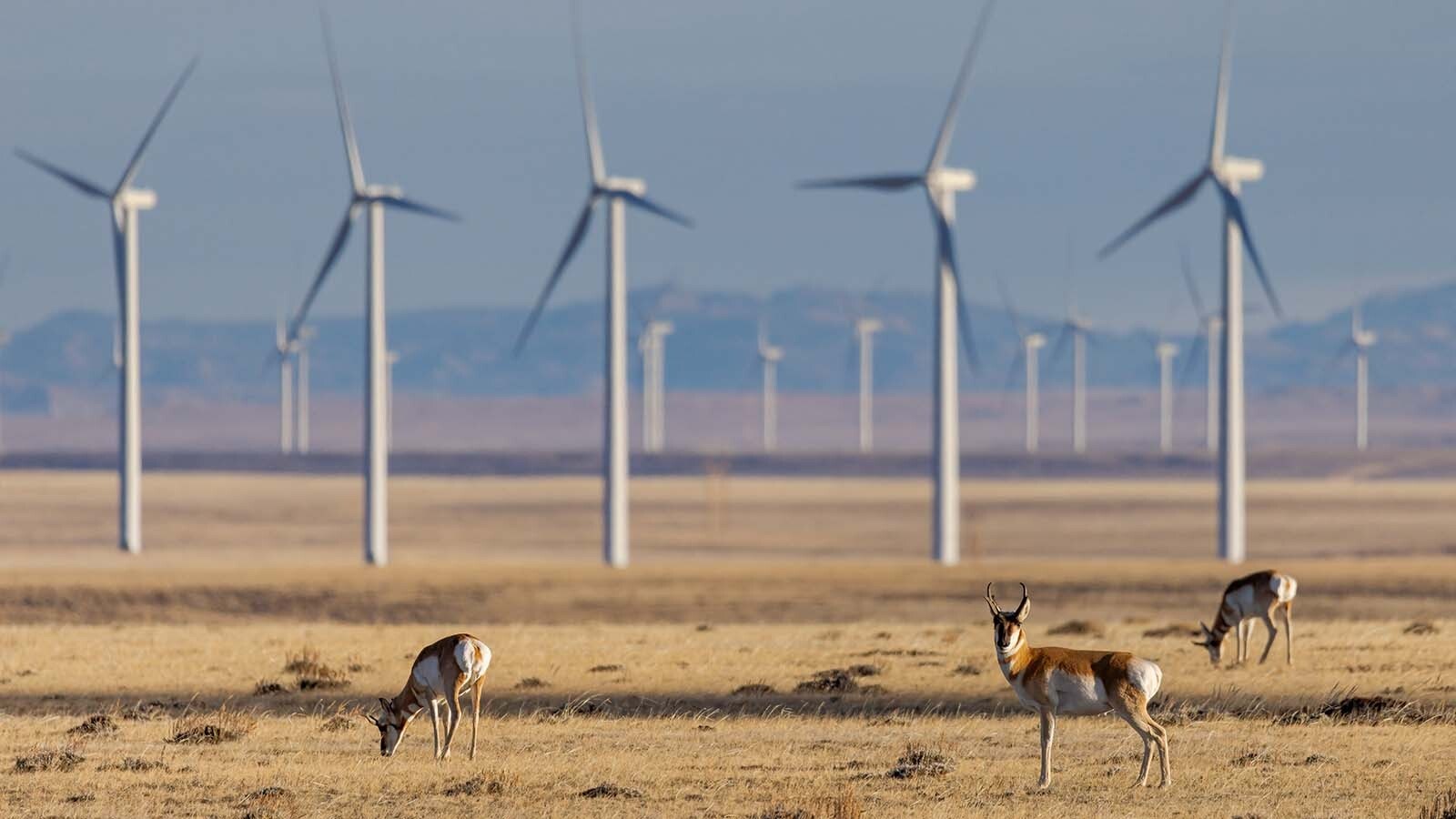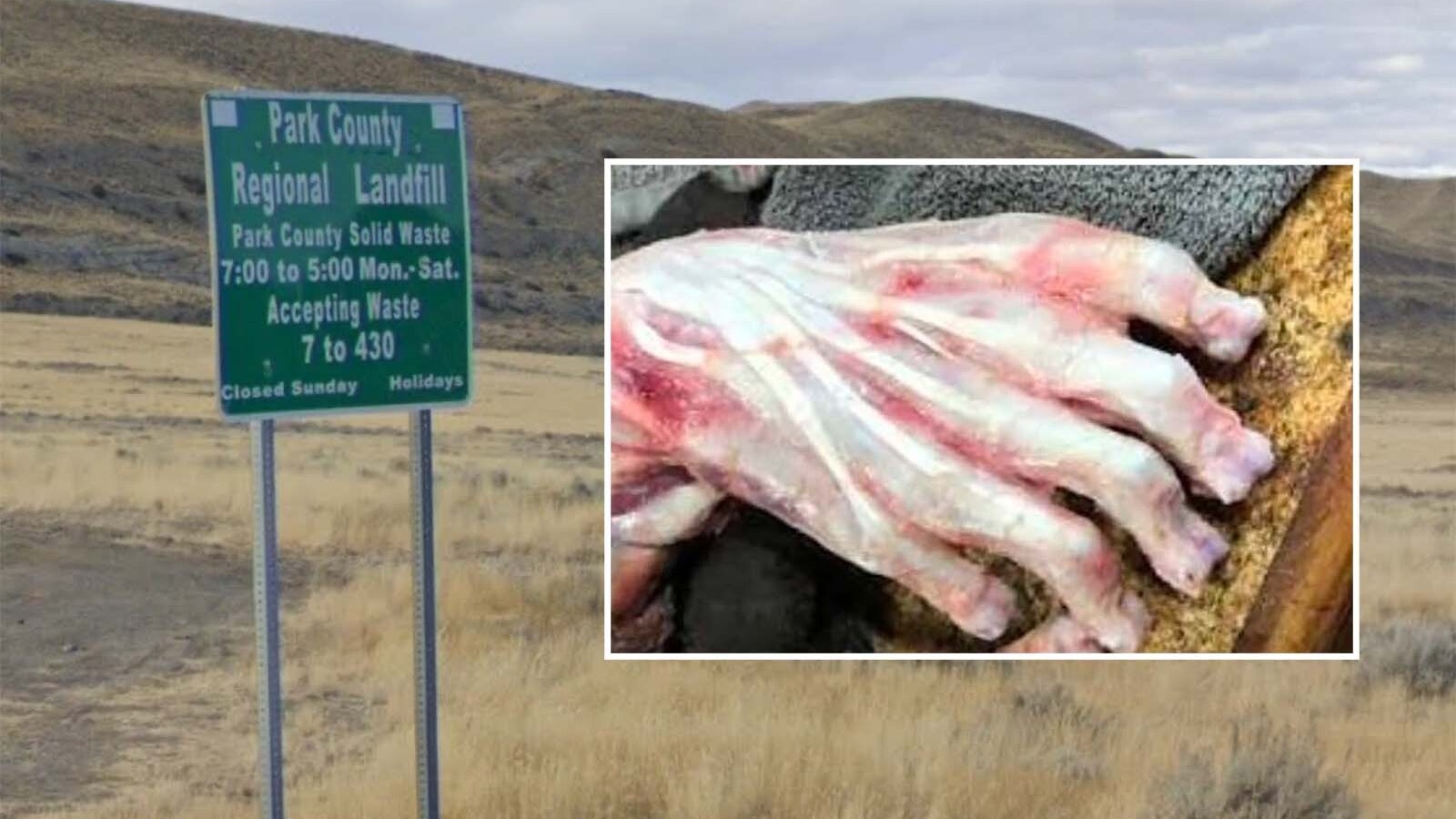Wyoming residents should be compensated for “loss of property” when huge wind, solar, minerals or other energy projects displace wild critters, a prominent Wyoming legislator said.
Toward that end, Sen. Larry Hicks, R-Baggs, is proposing a bill calling for companies to provide off-site compensation when “there’s an impact (to wildlife) that can’t be mitigated” on-site during energy development.
In most instances, effects on wildlife and habitat can be mitigated on-site by energy developers. But on those “rare occasions” where that’s not possible, compensatory funds could be used to pay for habitat conservation or other projects to benefit wildlife elsewhere in Wyoming, Hicks said.
Hicks is a member of the Wyoming Legislature’s Travel, Recreation, Wildlife and Cultural Resources committee, and brought his proposal before the committee during an interim meeting in Dubois on Thursday.
Others who testified before the committee said they had misgivings about the chilling effects the measure might have on energy development in Wyoming, should the proposed bill become law.
The permitting process for major energy sites in Wyoming is rigorous, expensive and lengthy, said Cheyenne attorney Cindy DeLancey, speaking on behalf of the American Clean Power Association.
Competition is stiff among Western states for big solar, wind, minerals and other energy-related projects, and Wyoming risks losing its “competitive edge” by adding more conditions to the permitting process, she told the committee.
“Our neighbors to the west, Utah, are doing a pretty dang good job of stealing projects that were once contemplated for Wyoming,” DeLancey said.
The committee took no action on the matter.
They voted to continue the comment period to its next interim meeting, because there wasn’t enough time on Thursday to hear from numerous people waiting to testify via Zoom.
Siting Council Approves Big Projects
As part of a complex application process, large energy development projects must be cleared by the state Industrial Siting Council, Jenny Staeben, industrial siting administrator with the Wyoming Department of Environmental Quality (DEQ), told the committee.
The siting council isn’t directly affiliated with DEQ, she said. It’s an independent panel of seven people appointed by the governor.
A total of “19 state agencies,” including the Wyoming Game and Fish Department, that might have a stake in a development project can submit comments and concerns to the siting council, she said.
Landowners and local governments that might be affected can also weigh in, Staeben said.
Proposals that must go before the siting council include those that might cost $290 million or more, she said. Or, for example, wind projects involving 20 or more turbines, or solar projects intended to generate 30 megawatts or more, or which will disturb 100 or more acres of land.
The siting council is open to ideas and concerns, so long as they can be proven to be relevant.
“There is no limit or hindrance on what can and can’t be asked for. But there does need to be a demonstration, factually that it is the project causing the issue,” she said.
Game And Fish ‘Flexibility’
Game and Fish regularly works with energy companies or other parties proposing developments, to determine the effects on wildlife and how to mitigate them, agency director Angi Bruce told the committee.
To date, most of the solar and wind projects in Wyoming have been on private land, where additional layers of federal wildlife-related regulations don’t apply, she said.
Over the past 10 years, Game and Fish has consulted with developers on 27 projects that were big enough to go before the siting council, Bruce said.
The agency’s involvement in such undertakings is time-consuming, Bruce said. It’s estimated that Game and Fish personnel invested about 325 hours into each of those 27 projects.
“Our job is not to stop development in this state. Our job is simply to work with those who come to us to try to find ways to develop that have the least impact on fish and wildlife,” Bruce said.
Having off-site mitigation as another option to explore with developers would give Game and Fish more “flexibility” in helping plan projects,” Bruce said.
There’s no way to avoid at least some effect on wildlife with large projects, so Game and Fish tries to focus on species and habitats with the greatest need for protection, she said.
“We manage for 800 species in this state, we can’t say there isn’t impact on any of them. So we need to focus on our priority habitats, our critical species and really hone in on those, so we’re not making it impossible to develop,” Bruce said.
‘We Are Stewards’
Local governments frequently reap benefits from energy projects, because tax revenue can go toward infrastructure, emergency services and the like, Hicks said.
Wildlife is considered property of the state, and therefore a public trust of all residents in Wyoming, Hicks said.
So it’s only fair that there should be compensation for loss of wildlife or habitat in one area but using energy-generated funds for conservation projects of equal value elsewhere, Hicks said.
Wyoming needs to strike a balance between robust energy development and preserving the state’s legacy of open spaces and abundant wildlife, he said.
“We are stewards and it’s our generation that will be judged as to whether we did a really good job of conserving this, and at the same time facilitating the opportunity for the private sector and business to move forward,” Hicks said.
DeLancey noted that energy development can be important to agriculture.
It can be difficult to turn a big profit through traditional family farming and ranching. So energy development projects on private property can help Wyoming agricultural families keep their ranches and farms whole and intact, rather than selling off parcels to be subdivided, she said.
That’s another reason to be cautious about passing legislation that might discourage energy companies from coming here, she said.
Mark Heinz can be reached at mark@cowboystatedaily.com.





